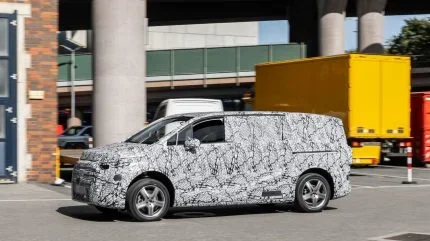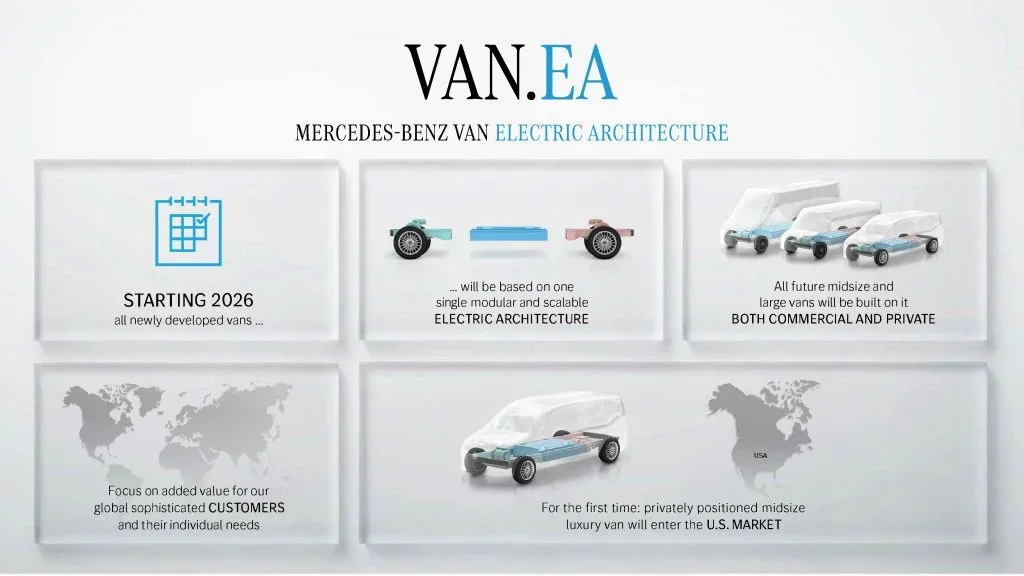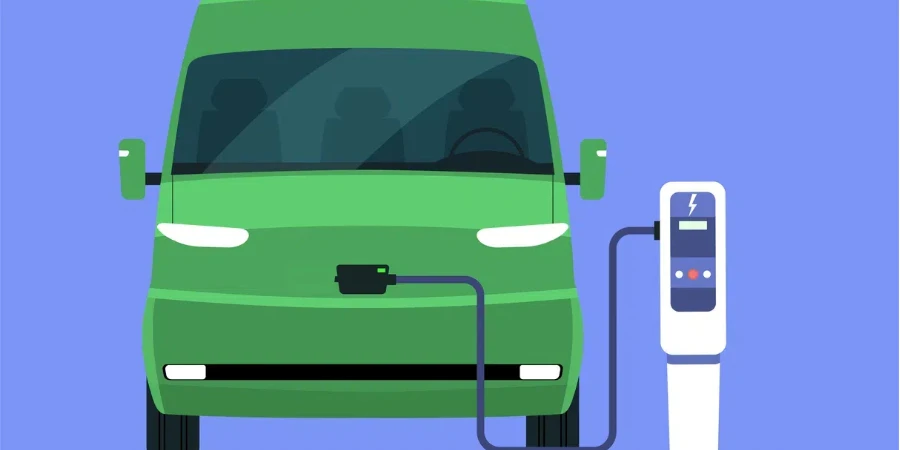Future electric Mercedes vans based on single modular and scalable electric architecture

Mercedes‑Benz Vans says it is implementing the next stage of its electrification strategy with VAN.EA.
From 2026, all newly developed medium and large vans from Mercedes‑Benz will be based on the modular, flexible and scalable electric architecture VAN.EA (Mercedes‑Benz Van Electric Architecture).
Mercedes says the first prototypes are now on public roads.
The company claims VAN.EA allows for a clear differentiation between privately positioned vans in the luxury segment and commercial vans in the premium segment. In the privately positioned vans, the portfolio will range from family vans to exclusive VIP shuttles to luxurious and spacious limousines for customers with the highest demands.
All vans will be equipped with the latest version of the Mercedes‑Benz Operating System (MB.OS), as well as a 800 volt charging system and a 22 kW AC charger.
For the first time, it is planned that luxurious private electric midsize vans will be introduced in the US and China.
Mercedes also says the new vans come with less complexity and significant economies of scale. There is a planned reduction of portfolio variants by over 50% compared to current vans with combustion engine covering the same use cases for customers.
There are plans for electric RVs, too, with a new model line of ex-factory midsize and large camper vans, based on VAN.EA.
Three modules
The front module consists of the electric powertrain and the front axle. The module is the same in all VAN.EA variants, in an optimized common parts strategy. The differentiation relevant to the customer takes place in the two other modules. The center module scales the vehicle length. This is also where the standardized battery case is placed. High-voltage batteries with different capacities are installed within the case. The rear module will be available in two versions: With an electric motor for the all-wheel-drive variants of VAN.EA and without electric motor for the front-wheel drive variants.
Based on these three modules, Mercedes says VAN.EA allows for a clear differentiation between privately and commercially used vans as well as for maximum synergies.
Production network
Mercedes-Benz Vans is reorganising the global production network with its first pure electric light commercial vehicles (eLCV) plant in Jawor, Poland.
Additionally to the eSprinter and the Sprinter vans with ICE drivetrains, the large cab chassis based on VAN.EA will also be built in Düsseldorf, Germany. The plant in Ludwigsfelde, the second of two plants in Germany, will continue to produce Mercedes‑Benz Sprinter and Mercedes‑Benz eSprinter and will shift to become a ‘competence center for eVan customization’, for example for camper vans. In addition, Mercedes‑Benz Vans will build VAN.EA-based midsize vans in its plant in Vitoria, Spain.

Source from Just Auto
Disclaimer: The information set forth above is provided by just-auto.com independently of Alibaba.com. Alibaba.com makes no representation and warranties as to the quality and reliability of the seller and products. Alibaba.com expressly disclaims any liability for breaches pertaining to the copyright of content.




